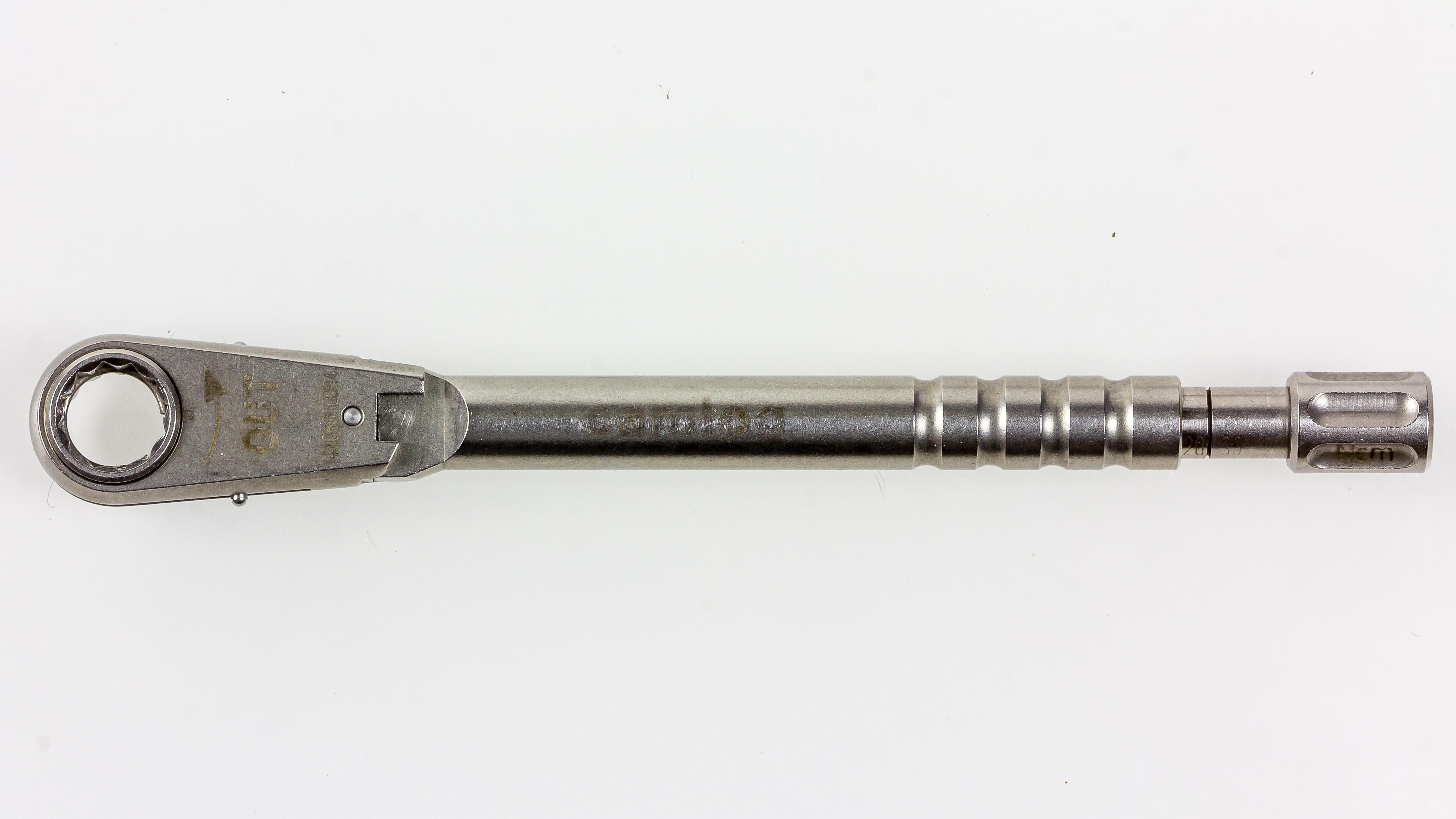
A torque wrench is an indispensable tool for anyone who is serious about accurate and efficient mechanical work. Whether you are a professional mechanic or a passionate DIY enthusiast, mastering the art of using a torque wrench can greatly enhance your ability to tighten nuts and bolts to precise specifications. In this informative article, we will guide you through the essential steps and principles of using a torque wrench effectively and safely, ensuring optimal performance and longevity of your machinery. So let’s delve into the world of torque wrenches and equip ourselves with the necessary knowledge to achieve impeccable results in our mechanical endeavors.
Introduction
A torque wrench is an essential tool for any DIY enthusiast or mechanic. It allows you to tighten nuts and bolts with precision, ensuring that they are not under or over-tightened. This helps to prevent damage to the fasteners and the parts being connected, and also ensures that the fasteners are secure and won’t come loose over time. In this post, we will guide you through the basics of using a torque wrench.
Before you start using a torque wrench, it’s important to familiarize yourself with its different parts. The main components of a torque wrench include the handle, the ratchet head, and the torque adjustment mechanism. The handle is where you grip the wrench, while the ratchet head allows you to turn the wrench in both clockwise and counterclockwise directions. The torque adjustment mechanism, usually located on the handle, allows you to set the desired torque level.
Once you have familiarized yourself with the different parts of the torque wrench, it’s time to choose the right torque setting for your specific task. This can usually be found in the manufacturer’s specifications or the user manual of the equipment or vehicle you are working on. It’s important to use the correct torque setting to avoid damaging the fasteners or the parts being connected.
When using a torque wrench, it’s important to follow a few simple steps to ensure accurate and consistent results. First, make sure that the fasteners and the surfaces being connected are clean and free from debris or oil. This will ensure a more accurate torque measurement. Next, firmly grip the torque wrench handle and place the ratchet head onto the fastener. Apply steady and even pressure while turning the wrench in the desired direction until you hear or feel a click. The click indicates that the desired torque level has been reached.
| Tightening Fasteners | Recommended Torque (in foot-pounds) |
|---|---|
| Small bolts (6mm or smaller) | 3-8 ft-lbs |
| Medium bolts (6mm-12mm) | 10-25 ft-lbs |
| Large bolts (12mm or larger) | 40-80 ft-lbs |
| Spark plugs | 8-25 ft-lbs |
After using the torque wrench, it’s important to handle it with care to maintain its accuracy and prolong its lifespan. Avoid dropping or mishandling the wrench, as this can affect its calibration. Store it in a cool, dry place away from excessive humidity or extreme temperatures. Additionally, it’s recommended to have your torque wrench calibrated regularly by a professional to ensure its accuracy.
Understanding Torque and Torque Wrenches
When it comes to tightening bolts or nuts, it’s important to understand the concept of torque and how to properly use a torque wrench. Torque refers to the rotational force applied to an object, typically measured in pound-feet or Newton-meters. Torque wrenches are specialized tools designed to apply a specific amount of torque to fasteners.
Types of Torque Wrenches
There are several types of torque wrenches available, each suited for different applications. Here are some common types:
- Click-Style Torque Wrench: This type features an audible click when the desired torque is reached, indicating that you should stop applying force.
- Beam-Style Torque Wrench: These wrenches use a calibrated beam to measure torque. As you apply force, the beam deflects, indicating the level of torque being applied.
- Digital Torque Wrench: These modern wrenches have a digital display that shows the applied torque in real-time, making them highly accurate and easy to read.
Using a Torque Wrench
Here’s a step-by-step guide on how to properly use a torque wrench:
- Select the correct torque value for your specific application. Consult the manufacturer’s specifications or a torque chart if needed.
- Attach the appropriate socket or socket adapter to the torque wrench.
- Align the socket with the fastener on the object you want to tighten. Ensure it fits securely.
- Apply force to the wrench, rotating it in the correct direction (usually clockwise) until the desired torque is reached.
- Once the desired torque is achieved, the click-style wrench will produce an audible click, or the beam-style wrench will stop deflecting. For digital wrenches, the display will indicate the applied torque.
Tips for Using a Torque Wrench
Here are some additional tips to keep in mind when using a torque wrench:
- Always use the torque wrench as a tightening tool and not a breaker bar to prevent damage.
- Store your torque wrench in a protective case to keep it clean and prevent accidental damage.
- Regularly calibrate your torque wrench to ensure accurate readings. Consult the manufacturer’s guidelines or have it professionally calibrated.
- Do not exceed the torque wrench’s maximum limit, as this can lead to overtightening and potential damage to the fastener or object.
- When working on multiple fasteners, tighten them in a crisscross pattern to distribute the torque evenly.

Choosing the Right Torque Wrench for the Job
Using a torque wrench is essential when it comes to properly tightening bolts and nuts. Whether you’re a professional mechanic or a DIY enthusiast, having the right torque wrench can make all the difference in ensuring the safety and integrity of your work. In this post, we will guide you through the process of at hand.
Consider the torque range
The first thing you need to consider when choosing a torque wrench is the torque range you will be working with. Every torque wrench has a specific range in which it is designed to operate effectively. Make sure to select a wrench that covers the range of torque required for your particular project. It’s always better to have a wrench that offers a little more torque range than you think you’ll need, just to be on the safe side.
Determine the drive size
Next, you’ll need to determine the drive size of the torque wrench that is suitable for your job. Drive sizes typically come in the following measurements: 1/4-inch, 3/8-inch, 1/2-inch, and 3/4-inch. The drive size you choose will depend on the size and type of fasteners you will be working with. It’s important to match the drive size of your torque wrench to the drive size of your sockets or other accessories.
Consider the type of torque wrench
There are several different types of torque wrenches available on the market, each with its own advantages and disadvantages. The most common types include click-type, beam-type, and digital torque wrenches. Click-type wrenches are the most popular due to their audible clicking sound when the desired torque is reached. Beam-type wrenches, on the other hand, rely on a visual indicator to show the applied torque, while digital torque wrenches provide precise digital readouts. Consider the pros and cons of each type to determine which one is best suited for your needs.
Quality and accuracy
When it comes to torque wrenches, quality and accuracy are of utmost importance. Look for torque wrenches that are made from durable materials and have been tested for accuracy. It’s worth investing in a reputable brand that offers a warranty, ensuring you have a reliable and accurate tool that will last for years to come. Additionally, it’s crucial to calibrate your torque wrench regularly to maintain its accuracy.
Price and budget
Lastly, consider your budget when choosing a torque wrench. While it’s important to invest in a high-quality wrench, you don’t have to break the bank. Compare prices and features of different models to find the best value for your money. Keep in mind that paying a little extra for a quality torque wrench can save you from future headaches and potential damages caused by inadequate tightening.

Proper Technique for Using a Torque Wrench
A torque wrench is a vital tool when it comes to tightening bolts or nuts to a specific torque value. Whether you are a professional mechanic or a DIY enthusiast, knowing how to use a torque wrench correctly can prevent damage to your equipment or ensure the safety of your project. Here are some essential tips and techniques to help you use a torque wrench effectively:
1. Choose the Right Torque Wrench
The first step in using a torque wrench is selecting the right one for your needs. There are various types of torque wrenches available, including click, beam, and digital torque wrenches. Consider the torque range, accuracy, and ease of use when making your selection.
2. Prepare the Work Area
Before you start using the torque wrench, it is important to prepare the work area. Ensure that the surface is clean and free from debris to avoid any interference with the accuracy of the readings. Additionally, make sure that the bolts or nuts you are working on are in good condition and properly lubricated.
3. Understand the Torque Specification
Each project has specific torque specifications that dictate how tight the bolts or nuts should be. It is crucial to know these specifications before using a torque wrench. You can find this information in the owner’s manual of your equipment or by consulting industry standards.
4. Apply Proper Technique
To ensure accurate and consistent torque readings, it is important to apply the proper technique when using a torque wrench. Follow these steps:
- Set the torque value on the wrench according to the specifications
- Align the wrench with the bolt or nut and make sure it is straight
- Apply force gradually and steadily until you hear or feel the wrench indicating the desired torque value
- Stop applying force once the indicator is triggered, and avoid over-tightening
5. Maintain and Calibrate Your Torque Wrench
Lastly, regular maintenance and calibration are essential to keep your torque wrench in optimal condition. Follow the manufacturer’s recommendations for cleaning, lubricating, and storing the tool. Additionally, remember to have your torque wrench calibrated periodically to ensure accurate readings.
Using a torque wrench correctly is crucial for achieving accurate torque values and avoiding equipment damage or failures. By following the right technique and maintaining your wrench, you can ensure the success and safety of your projects.

Maintenance and Care Tips for Torque Wrenches
Proper maintenance and care are essential to ensure the longevity and accuracy of your torque wrench. By following these simple steps, you can keep your torque wrench in top condition and maximize its performance.
1. Clean after each use: After using your torque wrench, wipe it clean using a soft cloth. This will help remove any dust, debris, or residue that may affect its accuracy. Avoid using solvents or harsh chemicals, as they may damage the wrench.
2. Store in a safe place: When not in use, store your torque wrench in a dry and clean area. Keep it away from extreme temperatures, moisture, and direct sunlight, as these factors can negatively impact its calibration.
3. Regularly inspect for damage: Inspect your torque wrench before and after each use to check for any signs of damage or wear. Pay special attention to the handle, ratchet, and calibration settings. If you notice any issues, contact a professional for repair or calibration.
4. Lubricate moving parts: To maintain smooth operation, regularly lubricate the moving parts of your torque wrench. Apply a small amount of high-quality lubricant to the ratchet mechanism and any other components that require lubrication. Be sure to follow the manufacturer’s recommendations for lubricant type and frequency of application.
| Maintenance Check | How often? |
|---|---|
| Check calibration | Every 6 months |
| Inspect for wear and tear | Before and after each use |
| Lubricate moving parts | Every 25 uses or as recommended by the manufacturer |
5. Schedule regular calibration: Over time, torque wrenches may lose their accuracy. It is crucial to have your torque wrench calibrated regularly to ensure precise readings. Refer to the manufacturer’s guidelines for recommended calibration intervals or consult a professional calibration service.
By following these maintenance and care tips, you can extend the lifespan of your torque wrench and maintain its accuracy. Remember, a well-maintained torque wrench is not only safer to use but also provides more reliable and consistent results.
Q&A
Q: What is a torque wrench and why is it important?
A: A torque wrench is a specialized tool used to apply a specific amount of torque to fasteners such as nuts and bolts. It ensures accurate and consistent tightening, preventing overtightening or under-tightening, which can lead to mechanical failures or damage.
Q: How does a torque wrench work?
A: Torque wrenches have a built-in mechanism that indicates when the desired torque has been reached. Most commonly, they employ a click-type mechanism, where a calibrated spring releases and produces an audible click when the desired torque is applied. There are also digital torque wrenches that display the exact torque value on a digital screen.
Q: When should I use a torque wrench?
A: A torque wrench should be used whenever you need to tighten fasteners to a specific torque value. This is crucial in various applications, such as automotive repairs, mechanical engineering, construction, and even bicycle maintenance. It ensures proper fastener tension and reduces the risk of accidents.
Q: How do I choose the right torque wrench?
A: Consider the torque range and accuracy requirements for your intended applications. Ensure that the torque wrench you select can accommodate the highest torque value needed, but also has a lower range for precision work. Quality and durability are important factors, so choose a reputable brand.
Q: How do I use a torque wrench?
A: Begin by setting the desired torque value on the wrench, usually using a handle or a digital interface. Ensure the fastener and its mating surfaces are clean and properly lubricated. Align the torque wrench with the fastener and apply pressure until you hear or see the indication that the desired torque has been reached. Always follow the manufacturer’s instructions for specific usage guidelines.
Q: Can I overtighten fasteners with a torque wrench?
A: While torque wrenches are designed to prevent overtightening, it is still possible to exceed the desired torque if excessive force is applied. Care must be taken to ensure proper technique and not to force the wrench beyond its limits. It is important to be mindful of the torque values to avoid damage.
Q: How often should I calibrate my torque wrench?
A: Torque wrenches should be calibrated periodically to maintain accuracy. The interval depends on the manufacturer’s recommendations and your frequency of use. As a general guideline, it is recommended to calibrate them annually or every 5,000 to 10,000 cycles, whichever comes first. Calibration can be done by specialized calibration services or with the help of a torque calibration tool.
Q: Are there any additional safety precautions to keep in mind while using a torque wrench?
A: Yes, it is essential to follow safety guidelines. Always wear appropriate personal protective equipment (PPE) such as safety glasses and gloves. Ensure you are using the correct torque value for the specific application. Be aware of the surroundings to avoid any potential hazards. If using an extended handle or adapter, check that it is securely attached to the wrench to prevent slippage.
Q: Can I use a torque wrench interchangeably with other tools?
A: While torque wrenches are versatile tools, it is important to use the appropriate tool for each task. Do not use torque wrenches as a breaker bar or for loosening stuck fasteners, as excessive force can damage the internal components. Use the torque wrench solely for its intended purpose of tightening fasteners accurately.
Q: Are there any maintenance tips for torque wrenches?
A: Keep your torque wrench clean and free of debris after each use. Store it in a protective case or in a clean and dry environment. Lubricate moving parts as recommended by the manufacturer. Regularly inspect for any signs of wear, damage, or loss of calibration and address them promptly by seeking professional assistance if necessary. In conclusion, mastering the use of a torque wrench is an essential skill for any individual who frequently engages in mechanical tasks. By following the step-by-step instructions provided, you can comfortably tackle various projects while ensuring accurate torque application. Remember, start by selecting the appropriate torque wrench and adjusting it to the desired settings. Maintain a steady hand and consistent pressure while applying torque to the fastener. Regularly calibrate and store your torque wrench in a secure and dry location to ensure its longevity and accurate performance. Lastly, be mindful of the safety precautions highlighted throughout this guide to prevent any potential mishaps. With practice and adherence to these guidelines, you can confidently wield a torque wrench to achieve precise and reliable results in your future mechanical endeavors.






